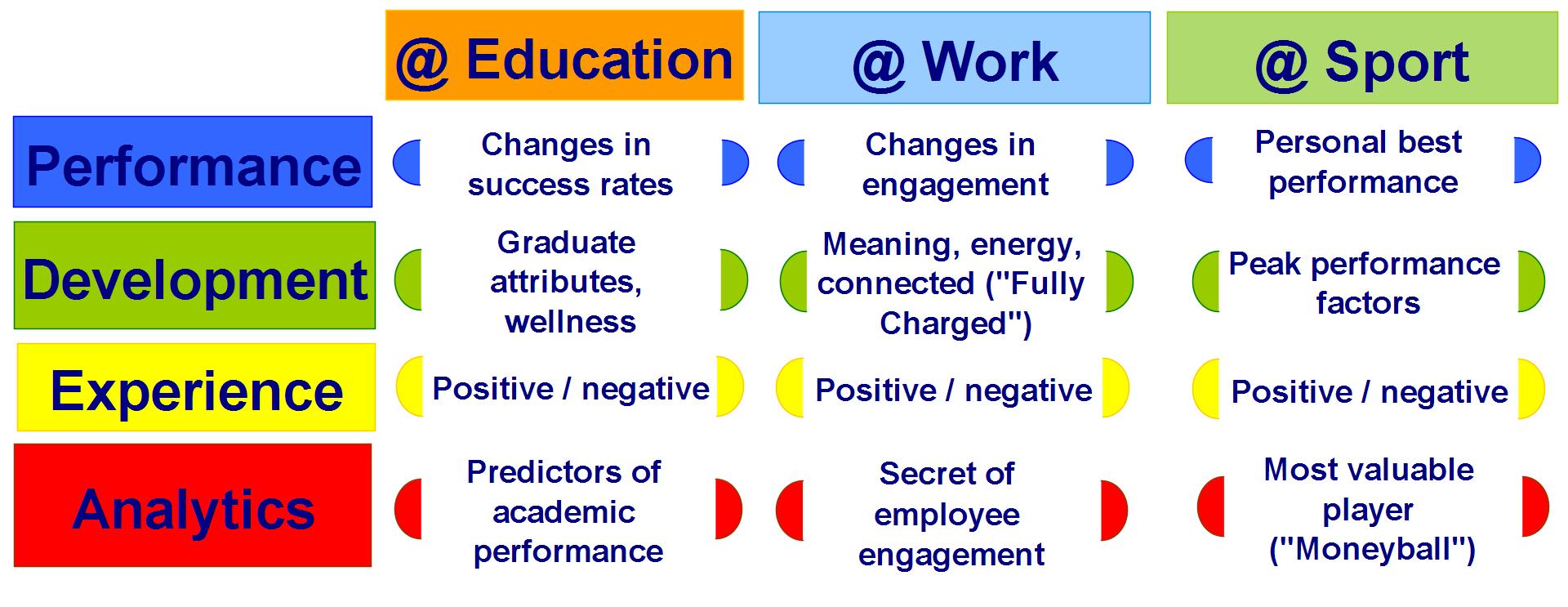The tracking of all activities allows for big data analysis and for quantitative, qualitative and mixed methods research studies to determine whether the goals of optimizing performance, experience and development were met.
Apart from the profile data of each member, we also have a complete record of his/her interactions with the system: assessment scores, answers to the workshop exercises, e-journaling entries , user generated content for the conditioning programs, data from the member's collection of "trackers", data from the gamification process (e.g. points, levels, leaderboard positions), personal reflections about the system, etc. It is thus clear that a huge amount of valuable data very quickly builds up. We are using a combination of quantitative, qualitative and mixed methods research methods to mine this data in order to measure the impact of our memberships on the performance, experience and personal development of our members. Data analytics provides us with more insights about our members and what factors make a difference for them, for example in their area of performance.
The diagram below shows examples of the outomes we are aiming for with our mixed methods research methodology and analytics approach in terns of performance, development, experience and "wisdom" for each of our three focus areas, namely education, the world of work and sport. A short explanation/description of each outome per focus area are provided below the diagram.
